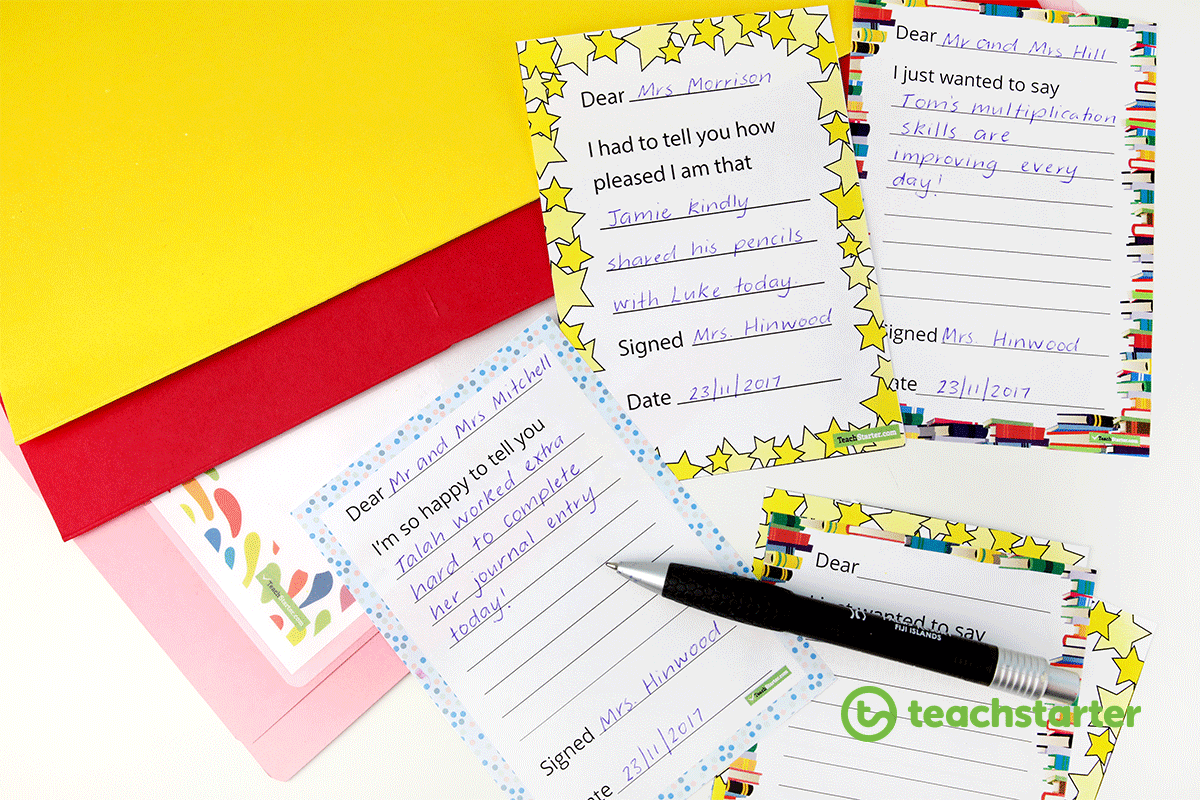Most teachers work hard to create a classroom vibe that feels like family. One that helps their students to feel as much at ‘home’ in school, as they do in the other familiar spaces in their lives. There’s a reason why so many teachers refer to their students affectionately as “my kids”! One small step away from our classroom ‘families’ are our students’ parents and carers. While these adults might not step into your room every day, they are an important part of your class family too! This post explores how you can create a strategy for parent teacher communication that benefits every member of your community.
Why You Need to Communicate Regularly with Parents and Carers
Building positive parent teacher relationships impacts every stakeholder in a child’s schooling journey. It is SO important for teachers to learn how to create great relationships with parents and carers.
(1) Take some time at the beginning of the school year to tailor a communication strategy that meets the needs of your specific students and their families. Check out the ideas below!
(2) Ensure parents know how you will stay in touch with them, and how they can best contact you.
(3) Be flexible and responsive. Evaluate which modes of communication work best for your current group of parents and care-givers.
The benefits of having a planned approach to parent teacher communication include:
- giving parents confidence in you and in their ability to connect with you easily
- parents and caregivers understand your expectations for student behaviour and effort
- increases parental involvement in their child’s education
- saves time (for both teachers and parents!) by reducing those incidental and sometimes ill-timed before and after school chats
- improves student learning outcomes.
Strategies for Parent Teacher Communication
Choose a mode or medium that works for your current parent group.
There will be a number of factors that influence the way in which you communicate with your student’s families. Things such as access to technology, languages spoken at home and any individual, child-safety related privacy concerns are significant considerations. Also, you need to choose one or two modes of communication that make it quick and easy for you to stay in touch on a regular basis.
For sharing quick, regular classroom insights use:
- online or mobile platforms like Class Dojo (this one is great for parents who need translations too!)
- social media – Twitter account or Facebook group.
For more detailed, in-depth communication use:
- phone calls or text messages
- student communication book or diary
- printed notes
- class newsletters
- school intranet e.g. virtual classrooms
- class blog or website.
Communicate early and often. The GOOD and the not so good!
The most important part of keeping families in the loop is actually keeping them in the loop!
Staying in touch with parents and caregivers about “everyday” happenings in your classroom builds the kind of relationships that are important if you do need to initiate a conversation about academic or behavioural challenges. Make a habit of informing parents about the ‘small’ things, both good and not so good.
These Positive Parent Notes are a great way to send home positive stories about a student’s day!
Communicate about the entire class as well as individual students.
Providing as much information about what is happening in class builds the parents’ confidence in you and makes sure they feel included in their child’s education. It also helps to contextualise your experience – acting as a reminder of the fact that you care for a large number of children in addition to the child of that particular parent or caregiver.
Having a class Twitter account or a private Facebook group is a great way to share a snapshot of class activities and student work. Just make sure you have permission from the parents or caregivers of all students who can be identified in any photos, videos or captions that can be viewed by a public audience on the internet.
Social and Cultural Awareness
It is helpful to think about this kind of communication from each parent or caregiver’s perspective. The school-home communication strategy that you set up needs to work for them!
Do you have parents who cannot read written English or speak a language other than English? Do all of your families have regular access to a reliable internet connection or a smartphone with data? Are there students in the class who have a complex home or family situation that means they cannot be included in any whole-class or publically accessible communication?
Taking the time to ensure that ALL families will be able to maintain a form of communication with you is important, even if it does mean that what you set up for the majority of the class needs to be slightly modified for some.
You may like to consider:
- if a multi-lingual teacher aide or cultural liaison officer can translate a newsletter, email or message for you on a regular basis
- confirming if families can translate emails or other forms of social media or digital communication at home
- providing private, direct communication with the parents or caregivers of certain students.








Comments